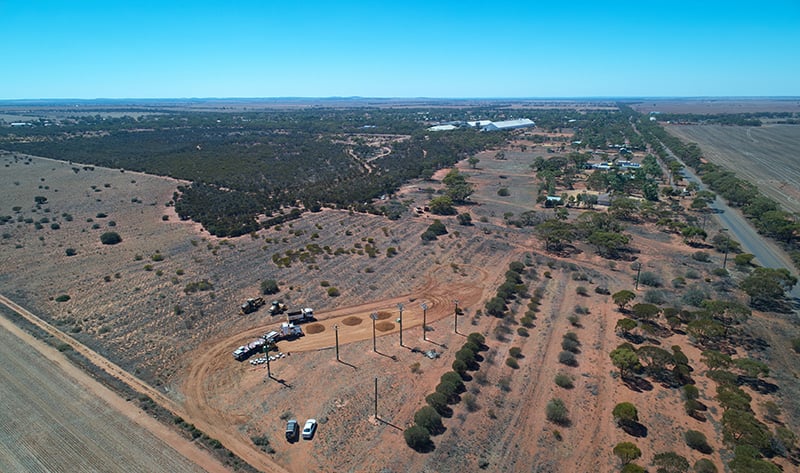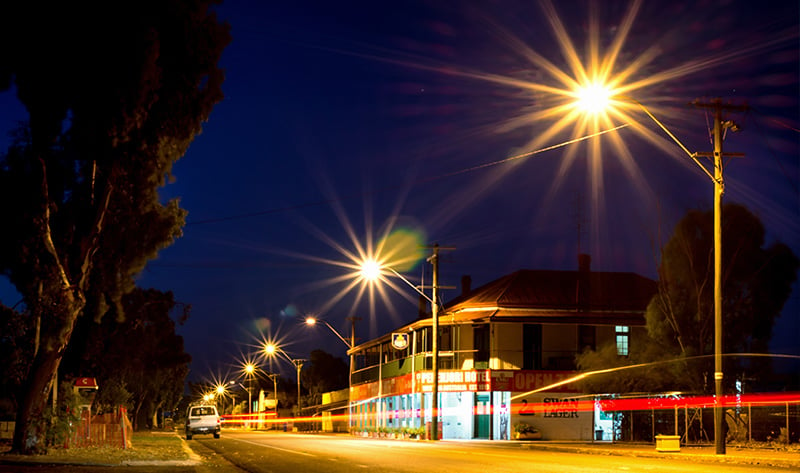At the end of a long spur line in WA’s Mid West, a small town is about be part of a bigger picture for reliability across our network.
Perenjori sits about 150km east of Dongara and, like many edge of grid communities, is reliant on a long feeder line for their power needs.
The line is exposed to nearly every conceivable element that nature can throw at it and trigger a disruption that cuts power to the 200 people who call the town home.
From May this year we will be trialling a 1MWh Battery Energy Storage System (BESS) as a power backup for the town that will eliminate up to 80% of outages.
The BESS consists of a series of lithium ion batteries and an inverter. It will be connected to the network via a transformer and switching equipment.
In the event of a disruption to the main power supply, BESS will switch on automatically and pick up the power needs of the town with enough stored electricity for between two and four hours, depending on the time of day.
Most of the outages that hit Perenjori are relatively short and are rectified without repair following an inspection of the line for faults. For people connected to the system, it means that the first indication of an outage won’t be the lights going out, it will be a message they are now in the hands of BESS.

Siteworks have commenced in preparation for BESS
BESS’s main goal will be to remove the question of reliability for customers who are half way through preparing a meal for the family, draining the oil from a customer’s sump or watching the footy with friends at the town’s local watering hole.
This $4.5 million, two year pilot is not the Holy Grail for edge of grid customer reliability, but it is a significant step to increase reliability for towns like Perenjori.
If the trial is successful it could signal the end of – or at least major reductions in – unplanned outages for edge of grid communities like Perenjori.
This project may or may not be history making for Perenjorians but it definitely makes them part of the future for our network.

BESS will provide improved reliability and reduced outages for local residents and businesses
More questions answered
From what date will the battery be operational?
We expect the battery and inverter system to be in place and operational by May 2017
How much will it cost, roughly, to install and connect the battery? Are there significant ongoing costs?
The pilot project cost is approx. $4.5 million and is set to run for two years. The exact price of the system is a smaller component of that overall project, and the exact requirements and therefore the cost can only be accurately determined following the completion of the two year trial.
As it is a trial, will the battery remain until the end of its life or until the trial is concluded?
The trial is set to run for two years and will gather technical and customer feedback on the performance of the system. If the trial is successful then we will consider the battery system becoming part of the network in the area. The life expectancy of the lithium ion batteries is about 15 years.
Where does the battery charge from?
The system will consist of a series of lithium ion batteries and an inverter, which will be connected to (and charged from) the network via a transformer and switching equipment.
The battery/inverter system will be integrated within the existing network, which means if a disruption does occur, the system will switch on to automatically supply the Perenjori town.
Leaving a charged battery plugged in could still drain some amount of power, as the battery loses charge over time even if it is not being used. Will installing this battery increase the amount of power used by Perenjori?
There is no meter placed on the battery so there will be no additional cost to customers in the town of Perenjori while the battery charges. If there is an outage, power used by customers from the battery system will be recorded on the customer’s meter as per normal operation of the network. The electricity used by the customer is measured at the same rate as if it is being supplied at a non disruption time.
Why was Perenjori selected?
The Perenjori battery trial is one of several solutions being tested and applied across the network by Western Power to potentially address customer reliability hotspots. The electricity load of Perenjori and the relatively short duration of outages makes it a suitable candidate for a battery solution as the installed capacity of 1MWh will be sufficient for between two and four hours of supply if a disruption occurs. The Battery Energy Storage System presents the best improvement per dollar spent due to the rapid advancement in lithium ion battery technology and inverter technology, along with the respective cost of these technologies.
What does this mean for the future?
The Perenjori Battery Energy Storage System pilot is one of a number of current and future projects that we are looking at to help improve reliability for remote and edge of grid customers. While the Battery Energy Storage System is being trialled in Perenjori, if the system is successful, the technology could be deployed in other areas of the network that experience a similar outage profile as Perenjori.
Posted 04 April 2017